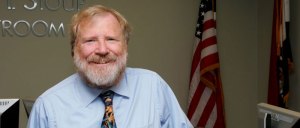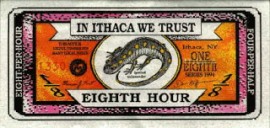I’m a big fan of the scientific fiction genre. No one did a better job of telling science fiction stories than Rod Serling from 1959-1964 on his television series, The Twilight Zone. I had many favorites, but one that really had me fooled was an episode titled, “To Serve Man.” The title, meant to be a double entendre, is based on an original short story of the same name by Damon Knight. I won’t go into the details of that episode but encourage those who like a twist ending to watch it. However, I will apply the title’s double entendre to discuss a few of the pros and cons regarding automation.
Automation is a subject that has a binary love or hate perception for most people. For me, I love it. Before getting into education, I spent many career years developing large scale warehouse automation opportunities for some of the largest companies in the world. We would approach each opportunity looking for inefficiencies in process, facility layout, equipment, and most importantly labor staffing levels or headcount. Always, the holy grail for these opportunities is a small real estate footprint, in a lights out, fully automated building, with NO humans inside. You can’t eliminate humans but the goal is to get as close as possible.
While there are many factors to identify in warehouse operations, e.g. workplace safety, increasing throughput/storage density, reducing errors/damage, etc., eliminating human labor time is the primary savings that pays for automation. A higher labor cost per worker adds up to a higher total labor savings overall providing a great opportunity cost advantage for a project’s approval.
In this post, I won’t get into the fact that after automation is paid for by human labor costs, labor savings continue to accrue to the equity side (shareholders) of the balance sheet. This is causing extreme inequality among working class labor. It is why you can have CEOs making 300, 400 or more times the average wage worker’s annual salary. Case in point, Manpower and Kohl’s as spelled out here: CEOs Paid 1,000 Times More Than Average Workers.
High, fully-burdened labor costs (benefits + hourly wages) are a legacy left over from when unions had more influence in production and distribution. Most unions have been under heavy political pressure for decades. They have been dramatically reduced in membership or eliminated, especially in the private sector. As the labor movement as waned, so have wages making it harder and harder to justify automation. Generally, a company prefers projects to break even after two or three years, and as mentioned before, then allowing labor cost savings to accrue to capital.
However, wages have grown for those who provide services in support of automation. The irony is that those supporting automation are now the targets to eliminate in an organization’s cost structure. Artificial intelligence is now getting huge venture capital investments in order to replace those high cost support wages.
The thing that stands out in all that I have said so far about justifying automation cost is that eliminating humans from the process is the primary goal. Yes, automation reduces redundant sometimes high risk activity that can injure, disable, or kill a human and, therefore, serves humans. However, on the other hand machines must be served by humans in the form of losing their job and supporting those machines (until they are replaced also.)
The greatest irony for me in justifying automation is that there has to be lots of high cost labor to eliminate. You have to serve humans up for elimination in order to get automation. However, with lower skilled, non-union labor mostly the norm in the private sector (and fast becoming so in the public sector too), it is more difficult to automate. Somehow wages will need to be raised significantly in order to get the next wave of cost justification for automation. For example, just about any $15 per hour or less (with no benefits) service sector job is not always high enough to justify automation.
One last thing, if automation is to serve a (hu)man rather than a (hu)man being served to automation, we must look at how to productively redeploy those humans eliminated by automation. Otherwise, who will buy the products the economy produces from automating all human labor activity? Machines don’t buy anything.




